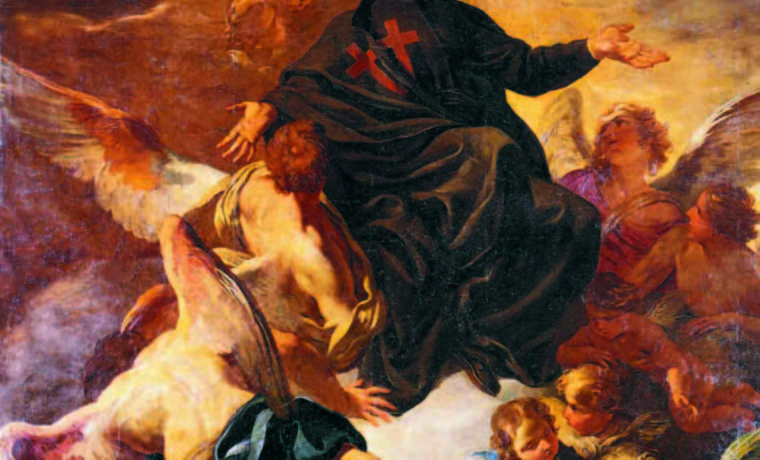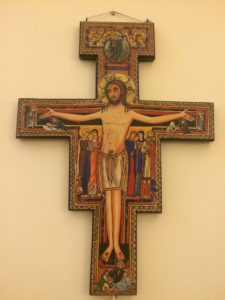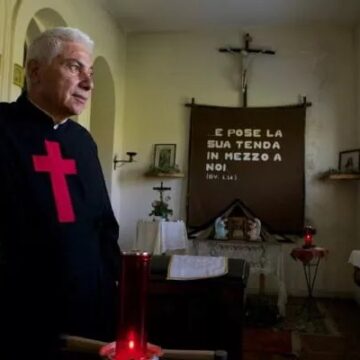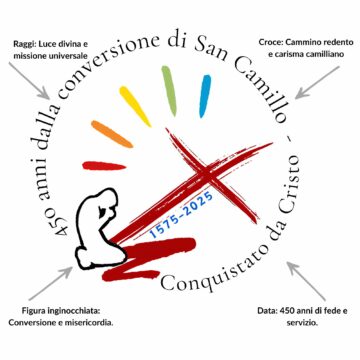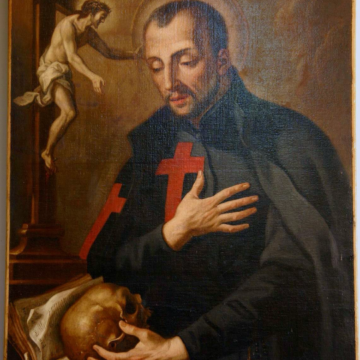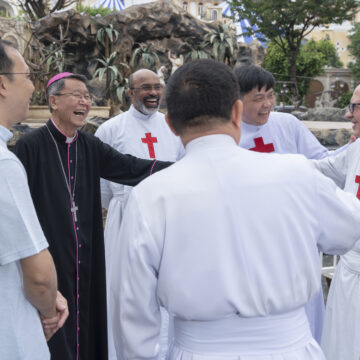Of all the saints to whom he was devoted, Camillus especially honoured Francis of Assisi. He learnt about him and followed his Rules, his spirit of poverty, of humility and of mortification, and he imitated him in his great love for the Crucified Christ.
Camillus repeatedly went on pilgrimages to Assisi and to places that had been sanctified by St. Francis. During his life, he put the maxims of St. Francis to very good use, and reminded his religious of them. He was devoted to St. Mary Magdalene and sought to imitate her in penitence. He believed that God Himself had granted her to him as a special patron saint given that God had given to him in Rome the church dedicated to this saint as the other house of the Order and afterwards as a place for his rest.
He venerated St. Charles Borromeo whom he met at the Jubilee of 1575 in Rome and a year later at the oratory of Father Phillip. In the year 1610, he was present in St. Peter’s at the canonisation of St. Phillip. He spoke with admiration about the great charity of Charles Borromeo in helping the plague-stricken: Oh!, he whispered, if only our Order had been founded at that time, this glorious saint would not have suffered so much in finding the ministers needed both for the souls and for the bodies of the plague-stricken!
Camillus commended himself to saints
He was devoted to St. Catherine of Sienna and went on a pilgrimage to her home. And he did the same with St. Bonaventure. Both in Rome, and when going from one city to another, he commended himself to saints, martyrs, confessors, and to the Holy Virgins that were commemorated in the places he went to.
On the occasion of the disinterment of the body of St. Cecilia in the year 1599, in the church named after her in Trastevere, he was invited by Cardinal Sfondrati (the nephew of Gregory XVI) to venerate that body. Oh blessed me, he whispered when admiring her, if only God grants me the grace and mercy of having me see this holy body in heaven as well, glorious and immortal!
Around his neck he carried a small box in the form of a cross which contained some relics of saints to whom he commended himself when he was in need. Guided by his strong piety, he took part when he could in special or extraordinary religious services. In Rome he frequently had an opportunity to do this at the tombs of martyrs, in the great basilicas or the many churches where famous pictures and relics were venerated. With St. Phillip Neri and other devout people he repeatedly went to visit the seven churches and when doing this he was accompanied by his religious.
The word of God
With singular piety he prepared himself for the jubilees of the Holy Years and the year 1600. He went on the numerous prescribed visits to the basilicas, always on foot, praying, and often fasting. During Lent he sometimes took part in the Lenten stations. If when he was travelling he managed to reach a sanctuary, he did not pay attention to the difficulties involved but stayed there to pray and take part in a Holy Mass. In every city, town and village that he went to, he learnt about the sanctuaries that were there, the famous relics, and the saints that were venerated, so as to venerate them himself. On his last voyage, in the year 1618, he made a special pilgrimage to the principal sanctuaries and wrote down on a sheet of paper the acts of devotion that he had performed in order to remind him of where he had gone and also to comfort him.
Camillus was greedy for the word of God, both listened to and read. He willingly went to the preaching and the sermons of the fathers of the oratory and went to that oratory for many years. When travelling he took advantage of the company of the religious of other Orders to listen to them communicating devout exhortations.
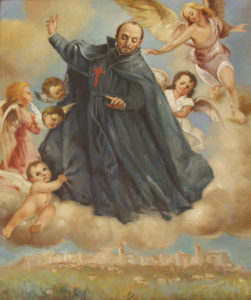 He wanted his own religious to be nourished by this spiritual food as well. In the first Rules of the Company he ordered: ‘All of those who are not occupied in service to the sick…should strive to go a least once every fifteen days to preaching, but during Lent they should do this at least twice a week…every month it should be arranged that some spiritual father should engage in exhortations’.
He wanted his own religious to be nourished by this spiritual food as well. In the first Rules of the Company he ordered: ‘All of those who are not occupied in service to the sick…should strive to go a least once every fifteen days to preaching, but during Lent they should do this at least twice a week…every month it should be arranged that some spiritual father should engage in exhortations’.
His favourite books
He prepared for his first Holy Mass by engaging in fifteen days of deep spiritual concentration. He loved spiritual reading – true food for the soul, as he loved to call it. Ever since he had been the master of the house at St. James’ Hospital, he promoted the custom of having a spiritual book read while the patients were eating.
His favourite book was The Life of Our Lord. Other works that he loved were: ‘Guidance’ or ‘Guidance for Sinners’ by the Venerable Father Luigi da Granata; ‘Spiritual Combat’ by Father Lorenzo Scupoli; and ‘The Imitation of Christ’. When travelling he took with him one of these, usually the first, reading it to his companions and having his companions read it.
From the early days of the foundation, he laid down that his followers should attend every day, for some time, to the acquisition of the virtues, that is to say spiritual reading with some reflection. When writing on 19 October 1596 to Father Oppertis he said: I commend you to the observance of spiritual things, in particular the acquisition of the virtues: nobody should depart from this without great cause.
Mario Vanti



